
How to Use LiPo Battery 3.7 V 1050mAh: Examples, Pinouts, and Specs
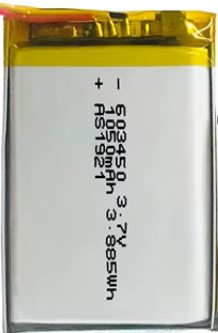
 Design with LiPo Battery 3.7 V 1050mAh in Cirkit Designer
Design with LiPo Battery 3.7 V 1050mAh in Cirkit DesignerIntroduction
The LiPo Battery 3.7V 1050mAh (Manufacturer Part ID: AS603450) by A&S Power is a rechargeable lithium polymer battery. It features a nominal voltage of 3.7 volts and a capacity of 1050 milliampere-hours (mAh). This battery is commonly used in portable electronic devices such as drones, RC cars, wearable technology, and various DIY electronics projects.
Explore Projects Built with LiPo Battery 3.7 V 1050mAh
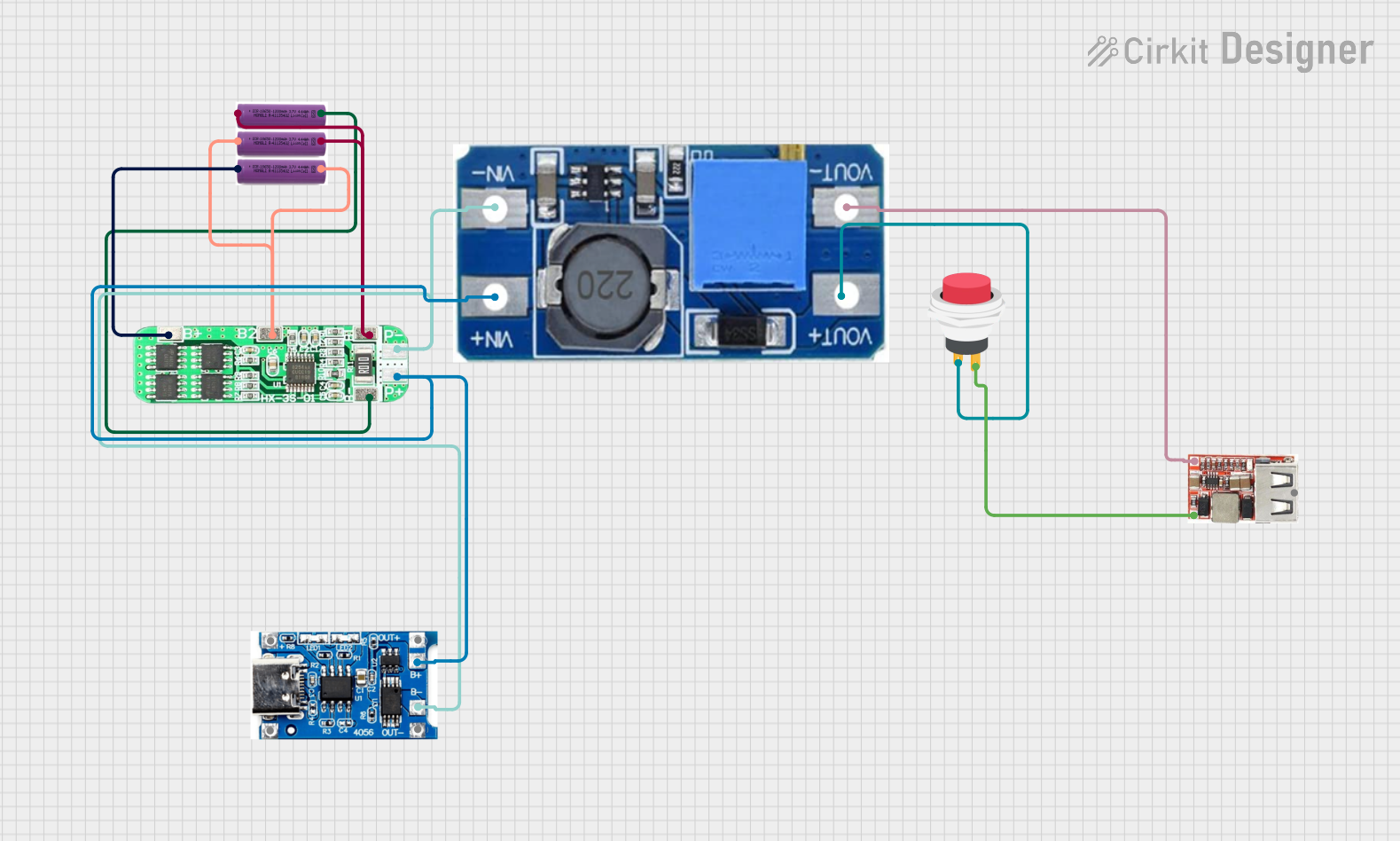
 Open Project in Cirkit Designer
Open Project in Cirkit Designer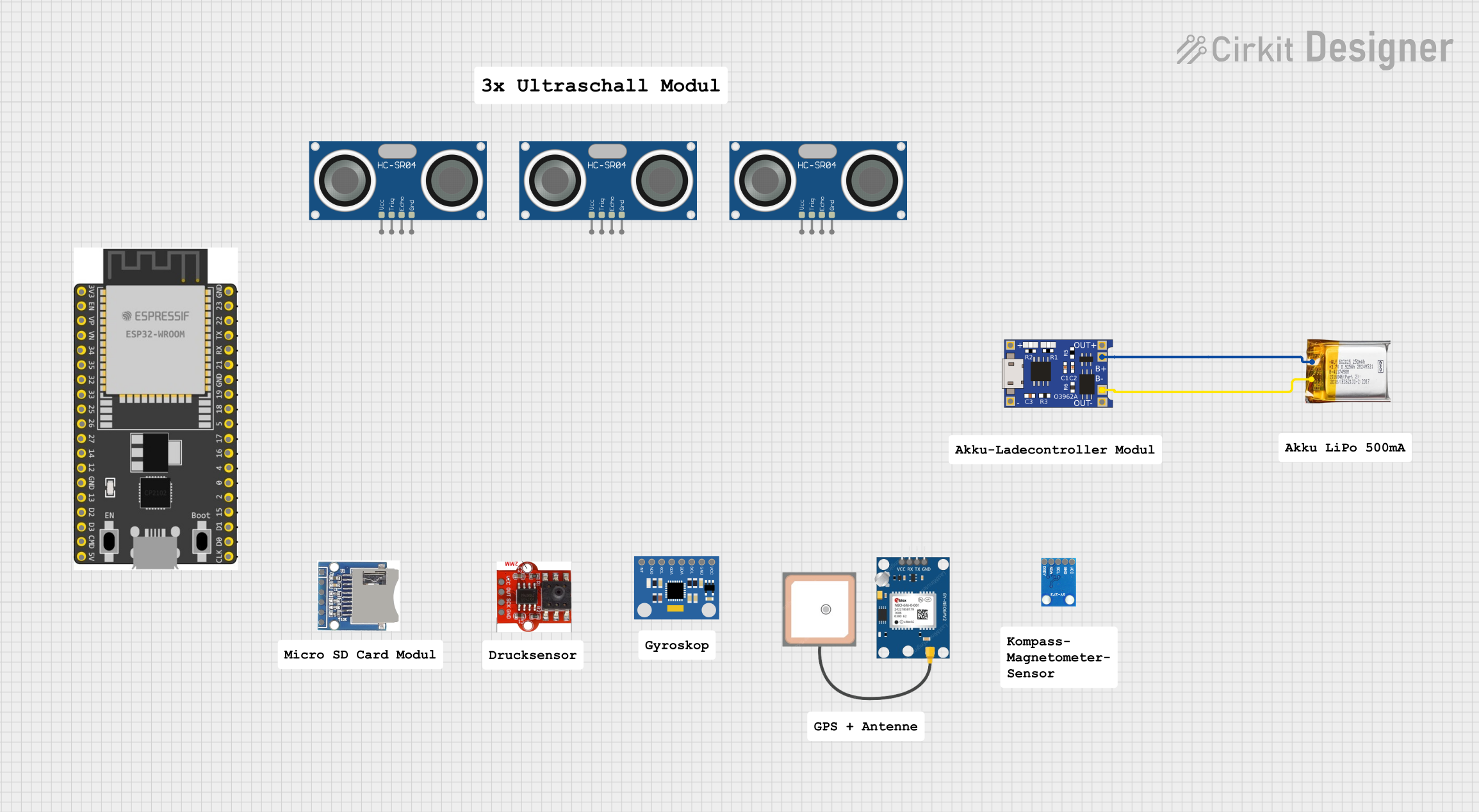
 Open Project in Cirkit Designer
Open Project in Cirkit Designer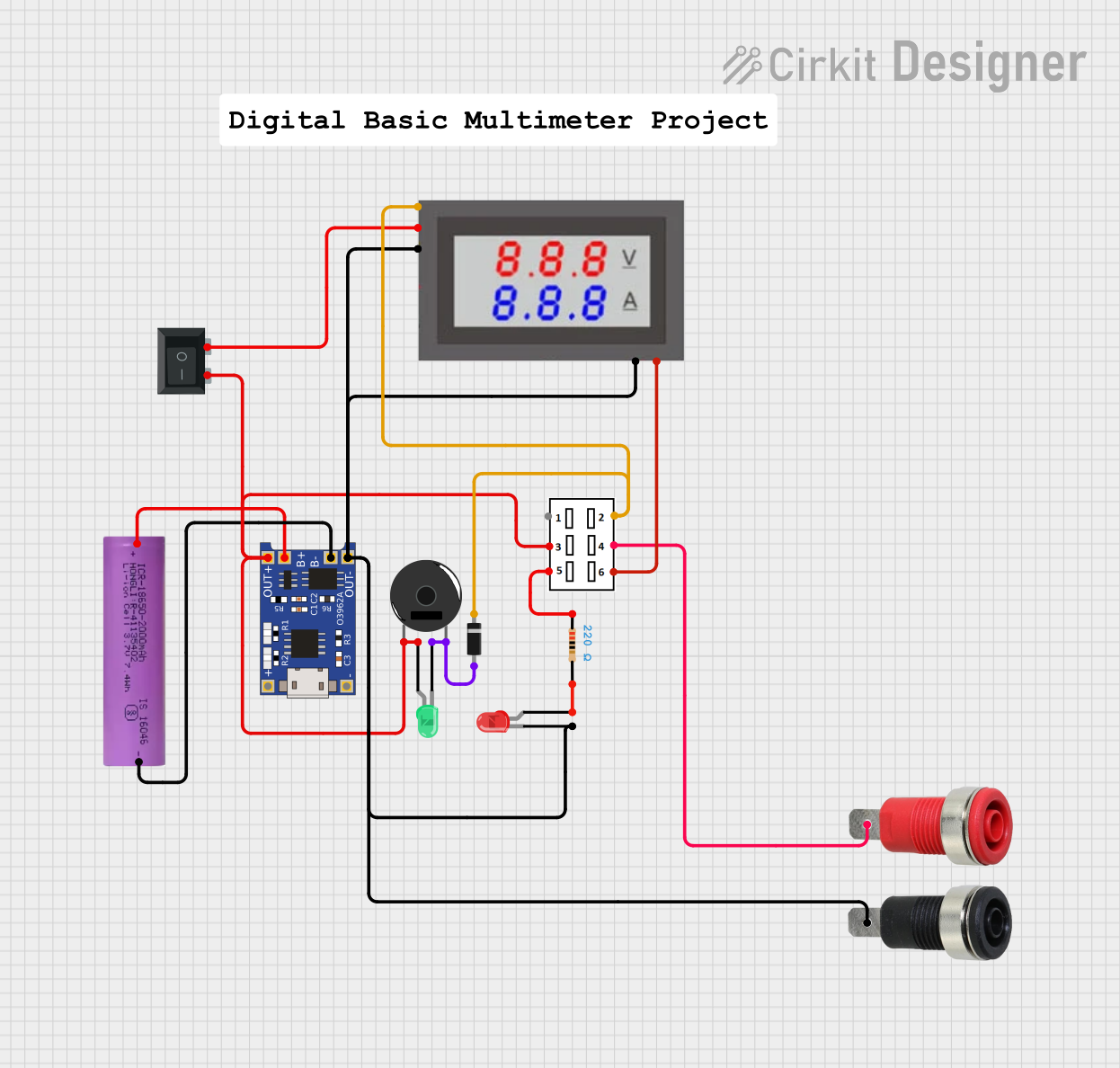
 Open Project in Cirkit Designer
Open Project in Cirkit Designer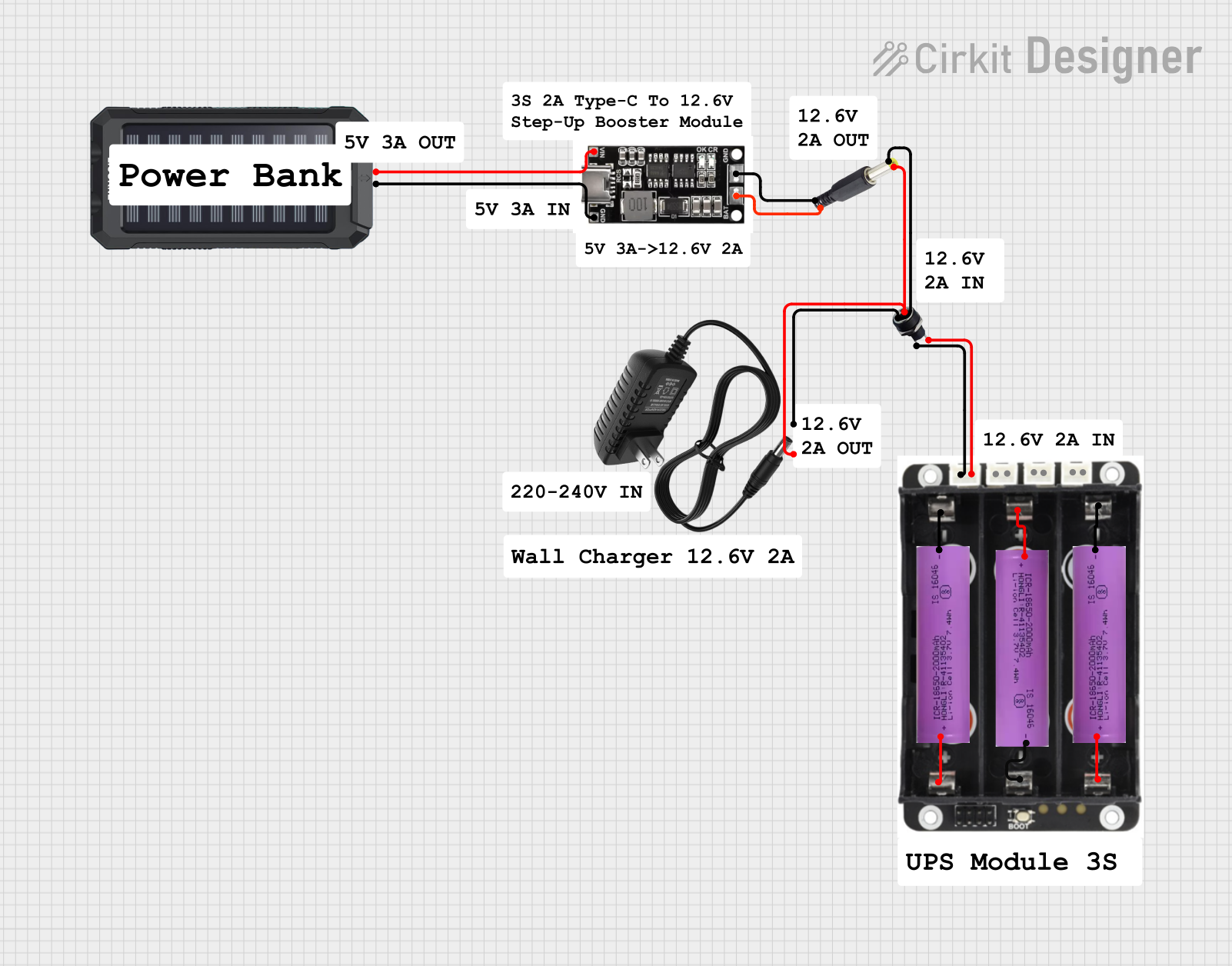
 Open Project in Cirkit Designer
Open Project in Cirkit DesignerExplore Projects Built with LiPo Battery 3.7 V 1050mAh

 Open Project in Cirkit Designer
Open Project in Cirkit Designer
 Open Project in Cirkit Designer
Open Project in Cirkit Designer
 Open Project in Cirkit Designer
Open Project in Cirkit Designer
 Open Project in Cirkit Designer
Open Project in Cirkit DesignerTechnical Specifications
Key Technical Details
| Parameter | Value |
|---|---|
| Nominal Voltage | 3.7V |
| Capacity | 1050mAh |
| Charge Voltage | 4.2V |
| Discharge Cut-off Voltage | 3.0V |
| Standard Charge Current | 0.5C (525mA) |
| Max Charge Current | 1C (1050mA) |
| Standard Discharge Current | 0.5C (525mA) |
| Max Discharge Current | 1C (1050mA) |
| Dimensions (L x W x H) | 60mm x 34mm x 5mm |
| Weight | 20g |
| Operating Temperature | -20°C to 60°C |
Pin Configuration and Descriptions
| Pin Number | Pin Name | Description |
|---|---|---|
| 1 | Positive | Positive terminal (3.7V) |
| 2 | Negative | Negative terminal (Ground) |
Usage Instructions
How to Use the Component in a Circuit
- Connection: Connect the positive terminal of the LiPo battery to the positive power rail of your circuit. Similarly, connect the negative terminal to the ground rail.
- Charging: Use a LiPo battery charger that supports 3.7V batteries. Ensure the charger has a cut-off voltage of 4.2V to prevent overcharging.
- Discharging: Avoid discharging the battery below 3.0V to prevent damage. Use a battery management system (BMS) if possible.
Important Considerations and Best Practices
- Safety: LiPo batteries can be dangerous if mishandled. Avoid puncturing, short-circuiting, or exposing the battery to high temperatures.
- Storage: Store the battery in a cool, dry place. If storing for an extended period, keep the battery at around 50% charge.
- Balancing: For multi-cell setups, ensure cells are balanced to prevent overcharging or over-discharging individual cells.
Example: Connecting to an Arduino UNO
To power an Arduino UNO with the LiPo battery, you can use a DC-DC converter to step up the voltage to 5V or use a LiPo battery shield.
Code Example
Here is a simple example of using the LiPo battery to power an Arduino UNO and read an analog sensor value:
// Simple Arduino code to read an analog sensor value
// and print it to the Serial Monitor
const int sensorPin = A0; // Analog pin connected to the sensor
void setup() {
Serial.begin(9600); // Initialize serial communication at 9600 baud
}
void loop() {
int sensorValue = analogRead(sensorPin); // Read the analog sensor value
Serial.println(sensorValue); // Print the sensor value to the Serial Monitor
delay(1000); // Wait for 1 second before reading again
}
Troubleshooting and FAQs
Common Issues Users Might Face
Battery Not Charging:
- Solution: Ensure the charger is compatible with 3.7V LiPo batteries and check the connections.
Battery Drains Quickly:
- Solution: Check for any short circuits in the circuit. Ensure the battery is fully charged before use.
Battery Swells:
- Solution: Stop using the battery immediately. Swelling indicates a potential failure. Dispose of the battery safely.
FAQs
Q1: Can I use this battery for high-current applications?
- A1: The maximum discharge current is 1C (1050mA). For higher current applications, consider using a battery with a higher discharge rating.
Q2: How do I safely dispose of a LiPo battery?
- A2: Take the battery to a designated e-waste recycling center. Do not dispose of it in regular trash.
Q3: Can I connect multiple LiPo batteries in series or parallel?
- A3: Yes, but ensure you use a battery management system (BMS) to balance the cells and prevent overcharging or over-discharging.
This documentation provides a comprehensive guide to using the LiPo Battery 3.7V 1050mAh (AS603450) by A&S Power. Whether you are a beginner or an experienced user, following these guidelines will help you safely and effectively integrate this battery into your projects.